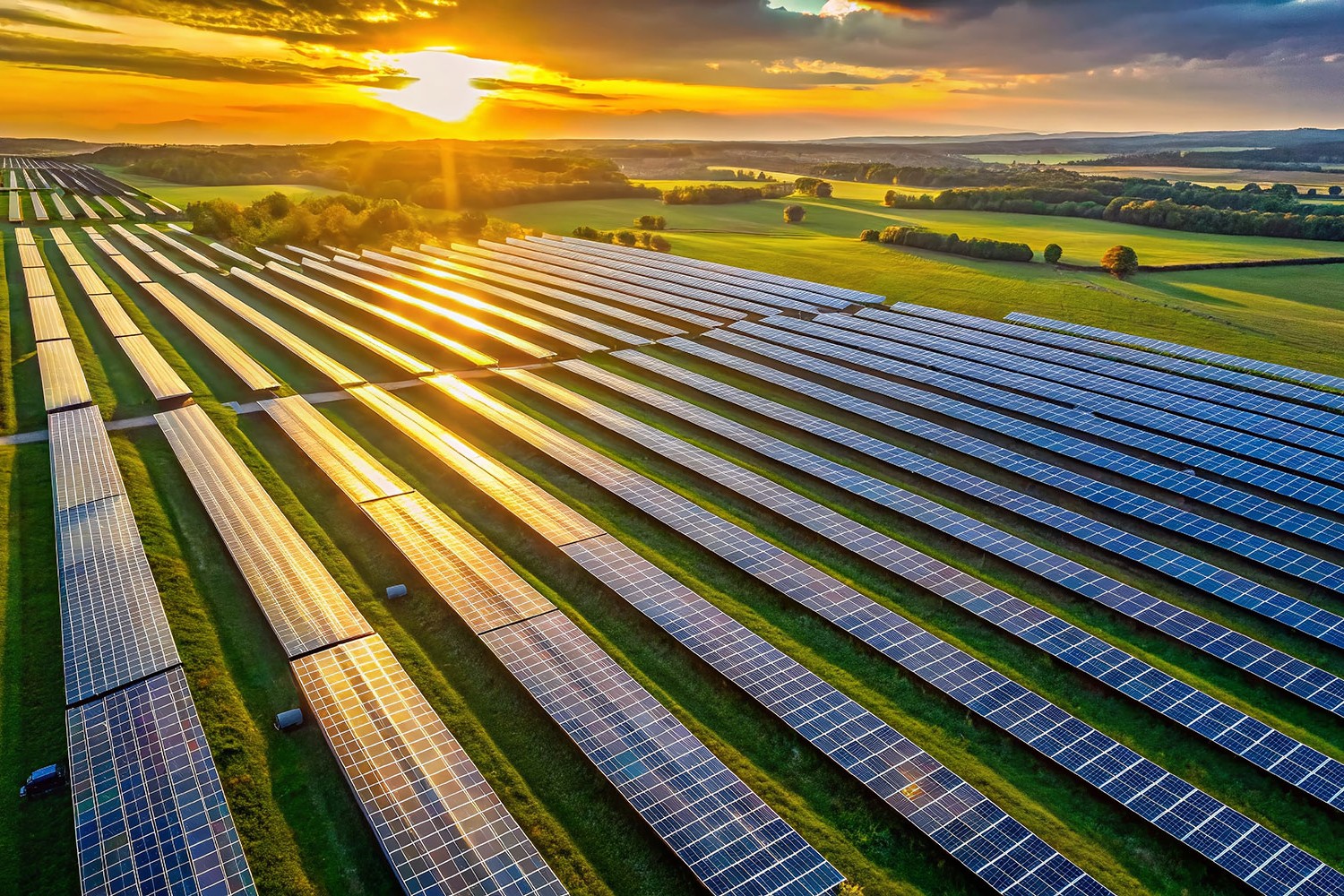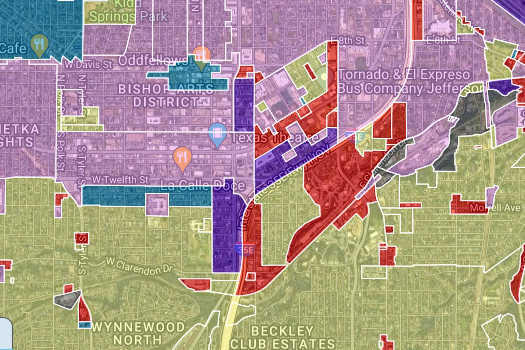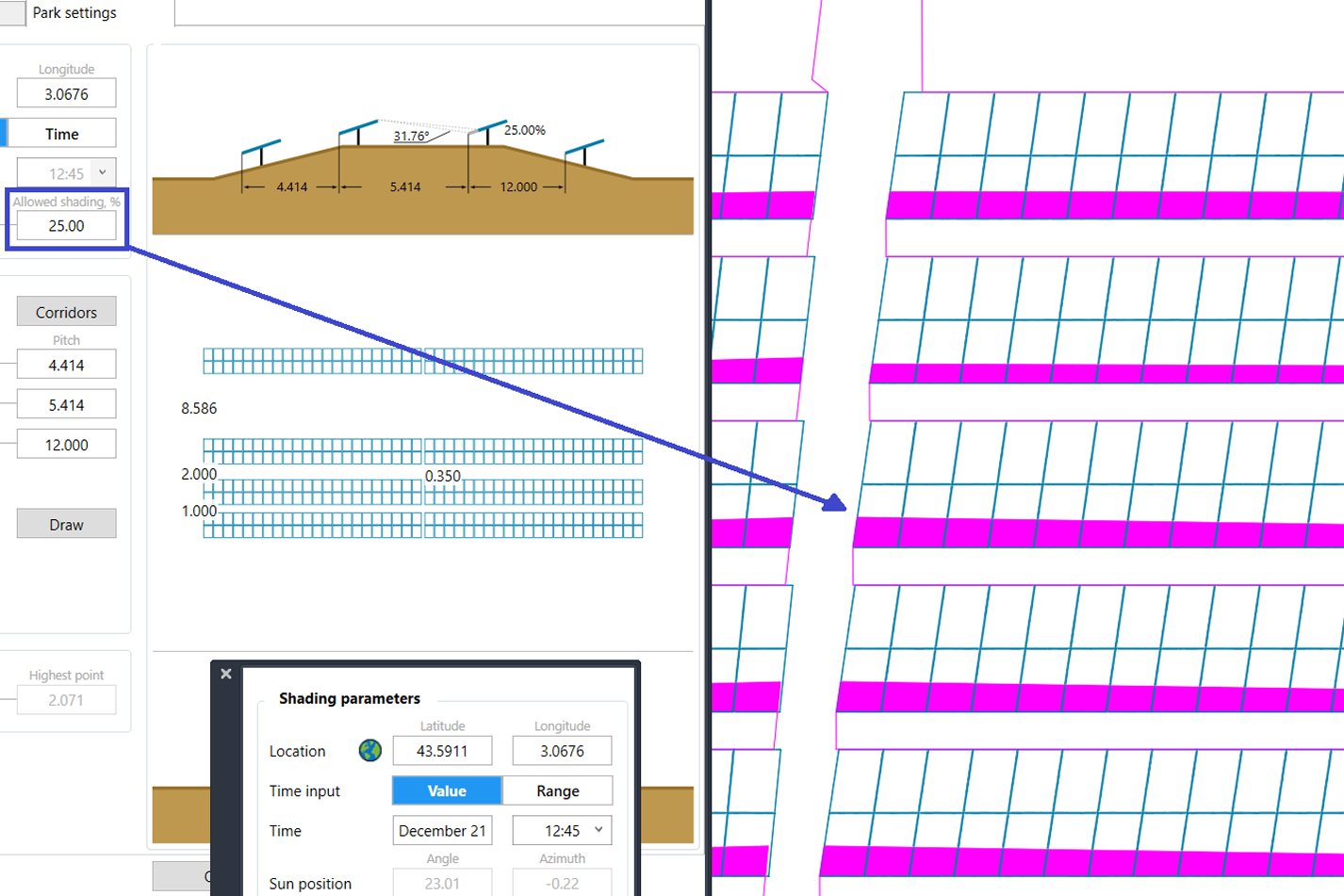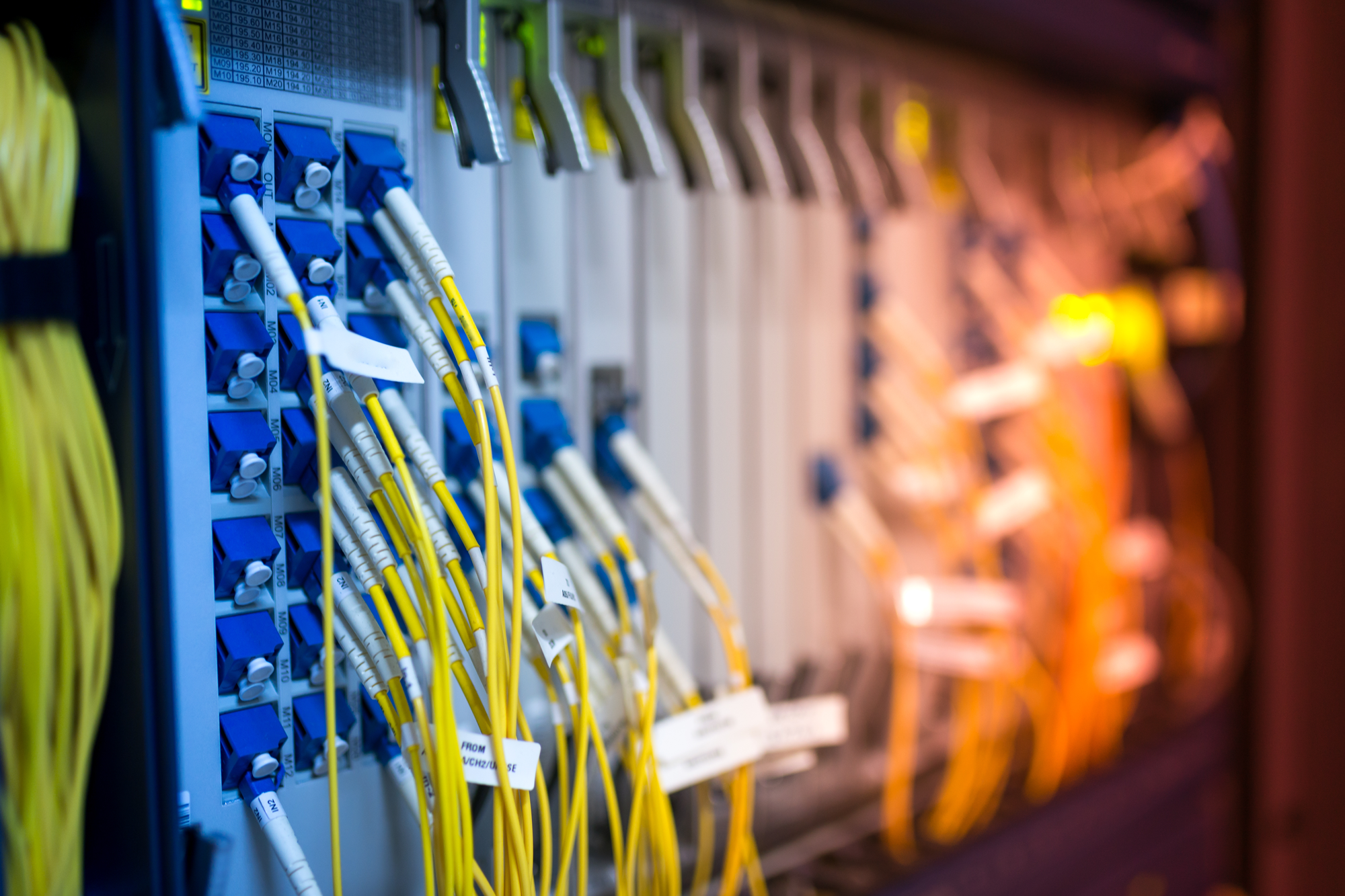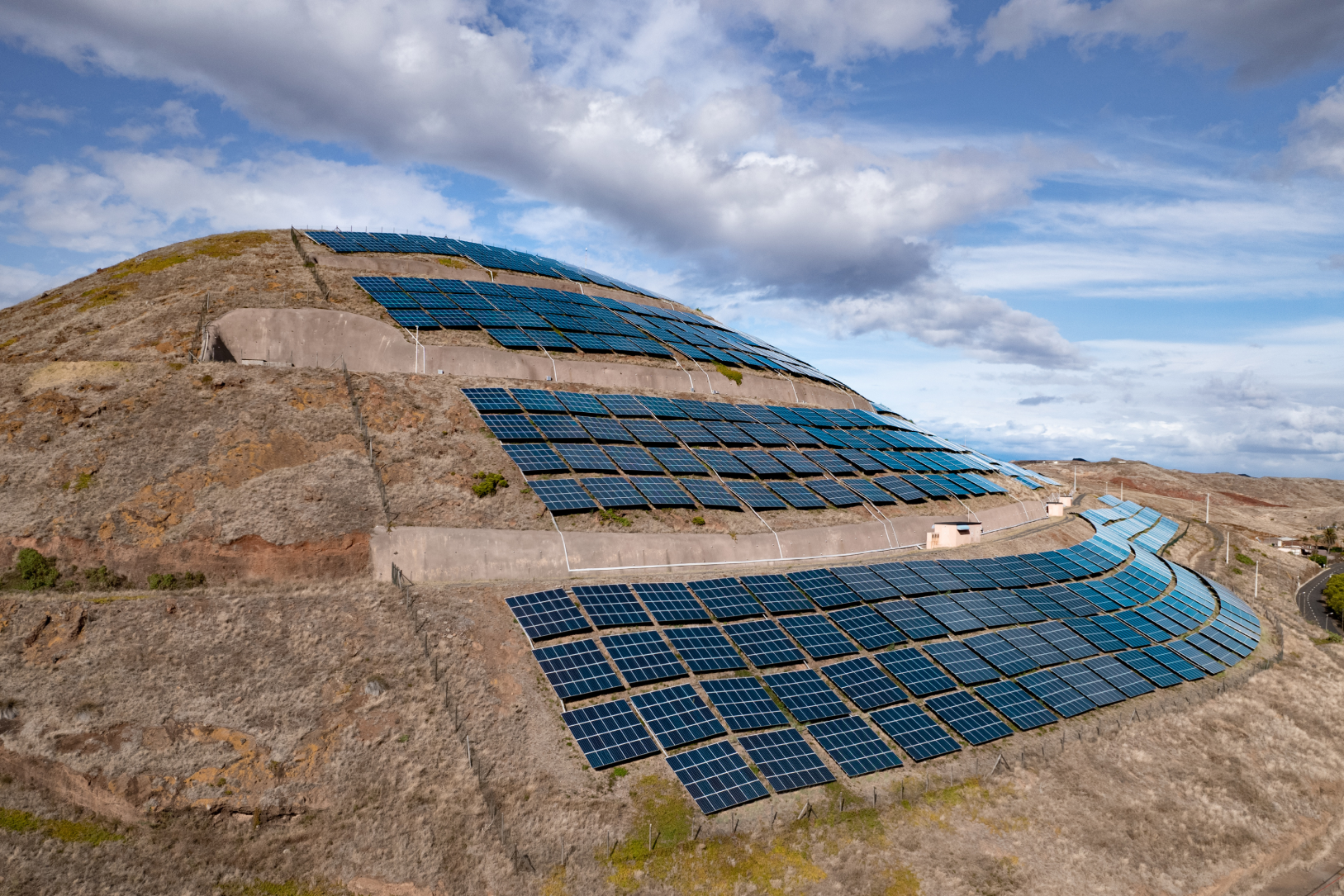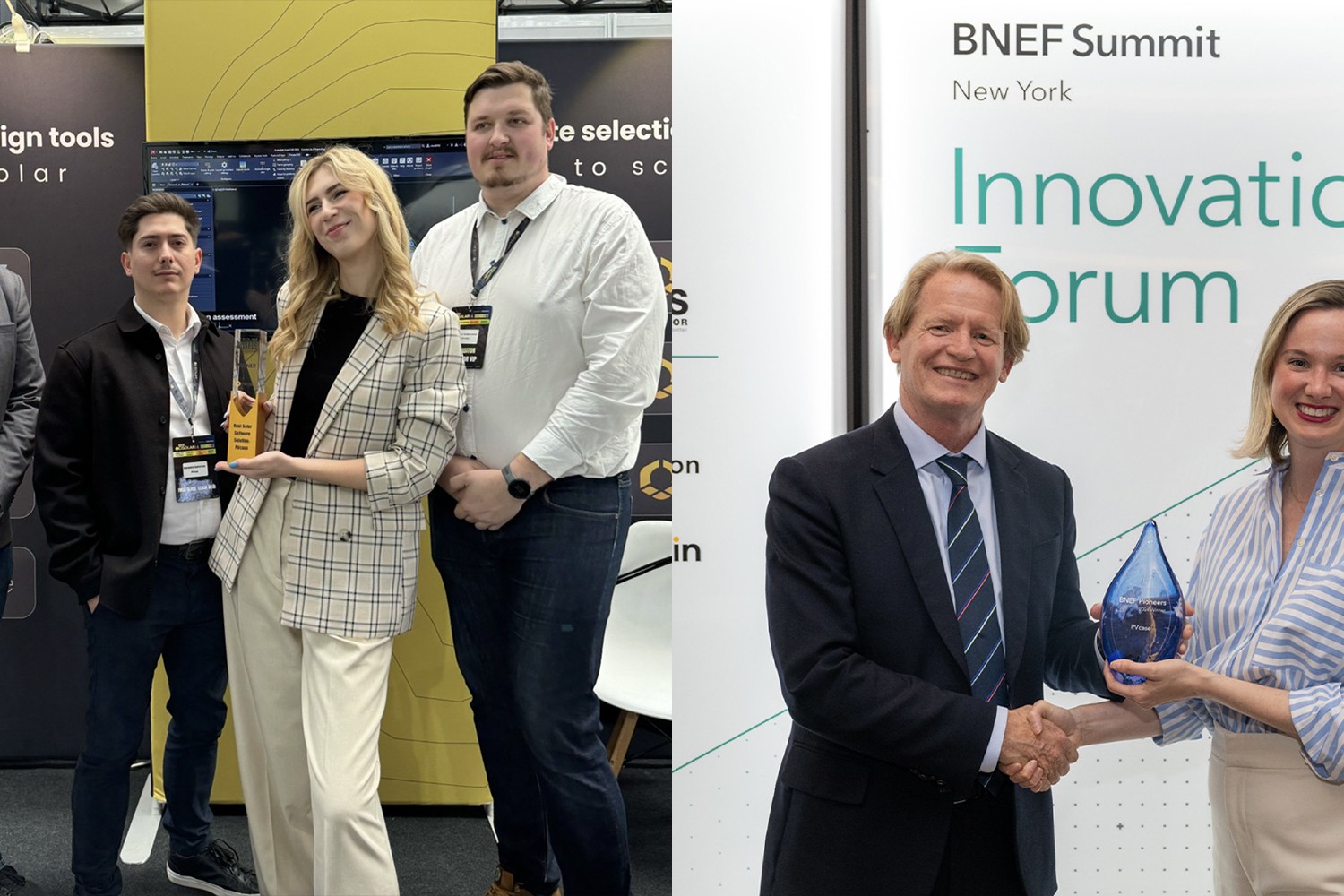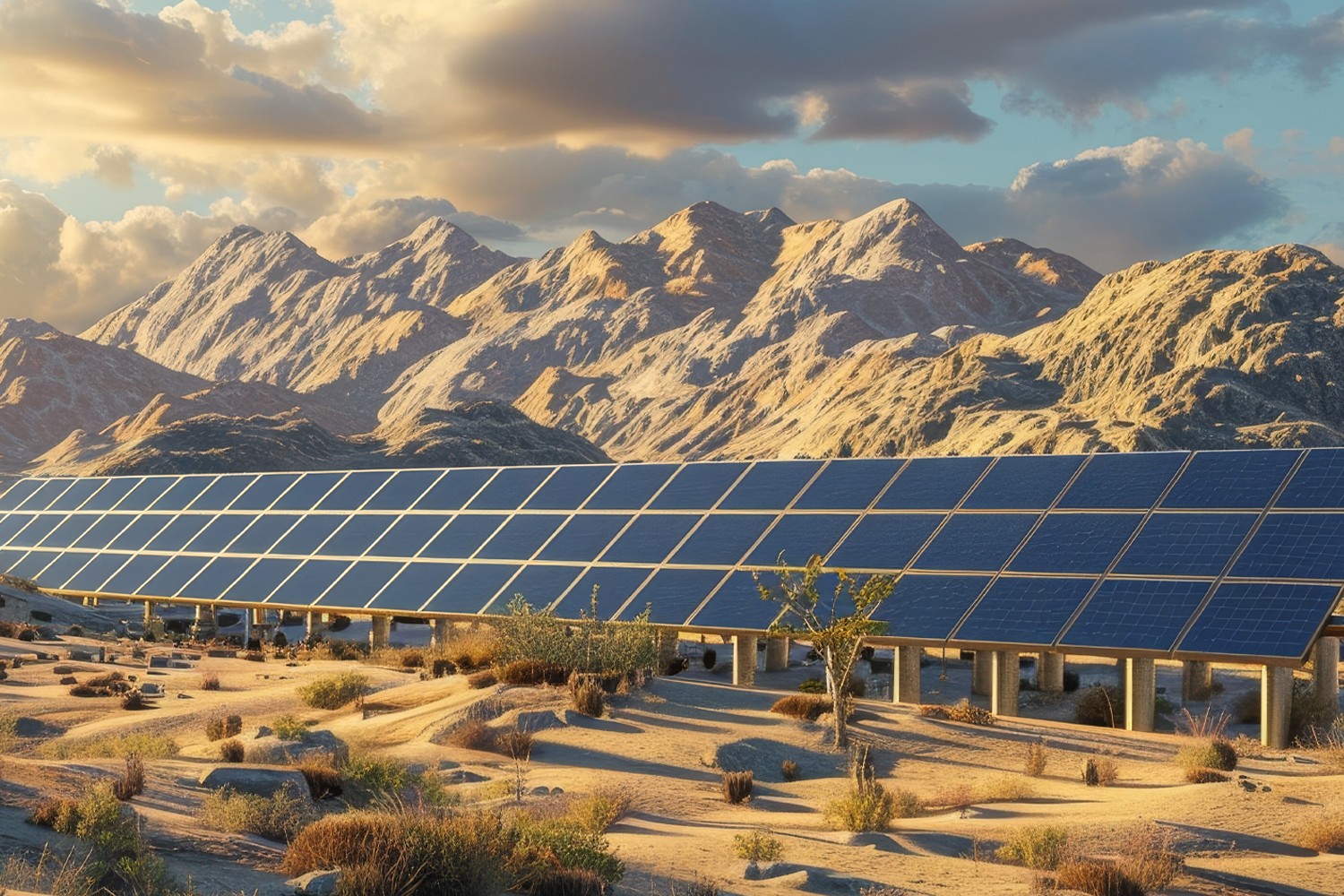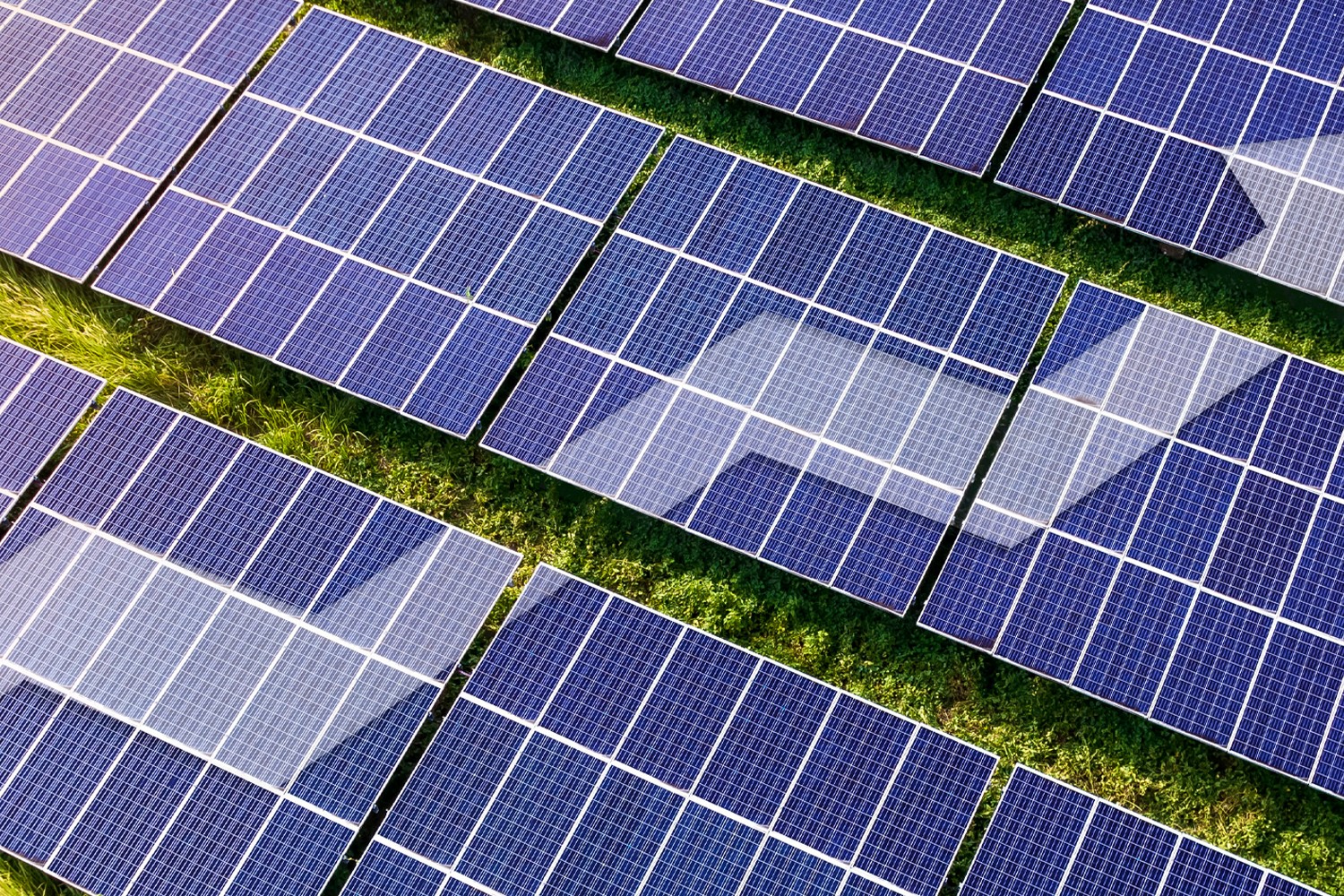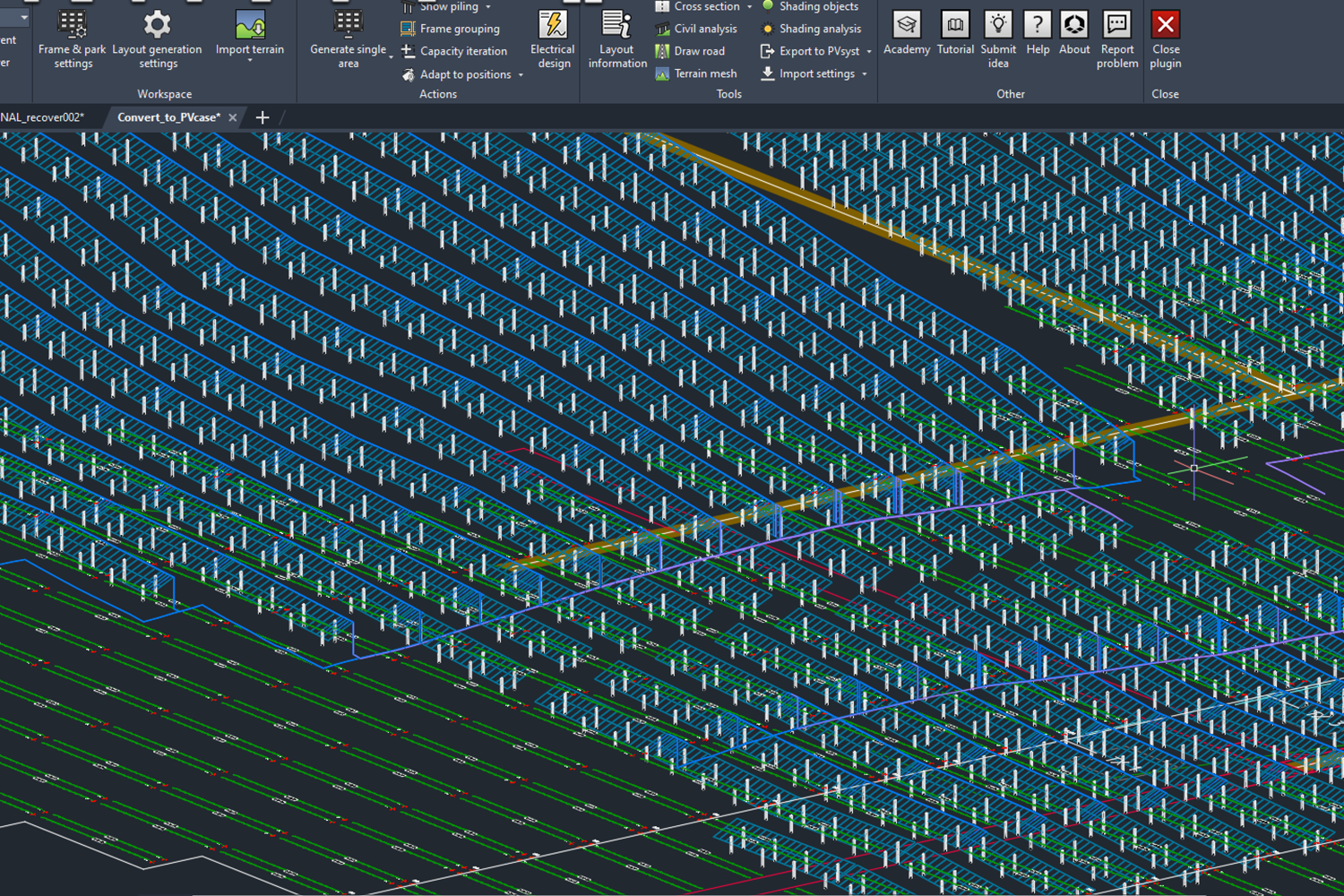On the 24 and 25 of January, PVcase assembled an A-Team to attend the Solar Quality Summit, the prime forum in Europe, to discuss and debate high quality for PV EPC, O&M, and asset management. The event was a fantastic place to learn about the latest developments in solar PV quality management, meet the cream of the crop in solar engineering, and have fun with a PVcase photo booth. Above all, it was an opportunity for us to organize a workshop on digital twins in the solar sector – more on that below.
Overcoming the quality-quantity binary in the “great solar scale-up”
The world is going through the aptly named “great solar scale-up.” According to the latest figures from BNEF, the world installed 269 GW of solar in 2022 (more than double what was installed in 2019). This scale-up is acutely felt in Europe, which is currently in the midst of its worst energy crisis in 50 years, and which has seen more than 41 GW deployed, more than doubling growth in only two years ago. And this is only the beginning. According to SolarPower Europe, with the right ambition, more than 1 TW of solar could be built in the EU annually by 2030 (more or less equal to all the solar built worldwide so far). Maintaining the highest standards of commissioning, operation, and maintenance of a fleet that grows exponentially will be the true litmus test for the solar industry.

In the face of this extreme challenge to European and global energy systems, the fundamental guiding light must be to avoid a quality-quantity binary. In other words, as we build increasingly complex solar projects, our sector must deliver the highest quality. If we do not, we risk losing the confidence of investors, politicians, and our fellow citizens. This may already be happening as we see growing cases of solar PV asset underperformance or increasingly hostile narratives around the development of renewable energy projects.
Productivity and accuracy tools like PVcase, which cuts design time on average by 50%, required to design solar PV projects accurately will be essential in this regard. More generally, however, we must develop a “quality mindset” (a term coined by Adele Ara, Head of Global Business Operations at Lightsource bp), which means striving for excellence by continually improving how we do things, applying lessons learned, investing in our people and finding the best talent. By not considering quality as an option, we will ensure solar PV continues to provide increasing amounts of carbon-free, reliable, and cheap electricity.
The case for digital twins in the solar industry
Beyond the construction of solar projects, the great solar scale-up brings another immense challenge: how to ensure the hundreds of GW of solar PV plants built annually are operated, managed, and maintained correctly? The key task to overcome this challenge is to improve how information about PV assets is created, shared, and stored throughout their lifecycle.
Today, PV plants need to be re-modeled several times throughout their lifecycle in different software, reducing efficiency, increasing the possibility of errors, and limiting information-sharing. Often solar professionals must deal with significant gaps in PV plant documentation, with test and technical data scattered across various platforms, clouds, or hard drives – that is, if the documentation exists at all, a crucial issue, particularly with earlier vintage PV plants. As a result, onboarding PV assets onto O&M platforms, evaluating the impact of structural or electrical improvements on PV project design, or assessing the value of a solar project portfolio can be time-consuming and thankless.
This doesn’t need to be this way. Queue-in the digital twin.
Within the TRUST PV Horizon 2020 project that we are proud members of, we collaborated with leading solar and software companies such as BayWa r.e., Above Surveying, IMEC, 3E, TU Delft, SolarMonkey, and Saidea to develop a “digital twin” that connects asset data and processes with PV plant layouts and simulations, from initial design to decommissioning in a virtual space. Within the Trust-PV project, we defined a standardized digital twin of a PV plant as “a parametrized (2D/3D) model of a PV system that contains all the physical information needed to simulate the behavior and performance of the real PV plant it represents”.

While digital twins are increasingly becoming a buzzword in solar, the PV industry is considerably far from the digital twinning capabilities available to other industries nowadays. We feel the concept of digital twins needs to be demystified to move forward.
The digital twin developed within TRUST PV is based on physical information to simulate the behavior and performance of a real PV plant. These include features such as the 3D model of the plant, including all modules, nearby shading objects and their optical properties, terrain topography, the complete electrical design and component characteristics, and component metadata, among others. This data must be provided with the highest possible accuracy (to ensure the digital twin matches its real counterpart) and ideally in a standardized format allowing different service providers to create compatible solutions. The digital twin must also be able to enable and track changes to the model using a versioning system.

In this context, we organized, for the very first time, an interactive group workshop to explore existing challenges arising from the vast diversity, lack of standardization, and non-transferability of PV asset information. We were delighted to see massive interest in our work as we gathered more than 70 people from diverse backgrounds. Participants were divided into seven groups: developers, asset owners, EPC and O&M engineers, finance and investors, independent engineers, and service providers.
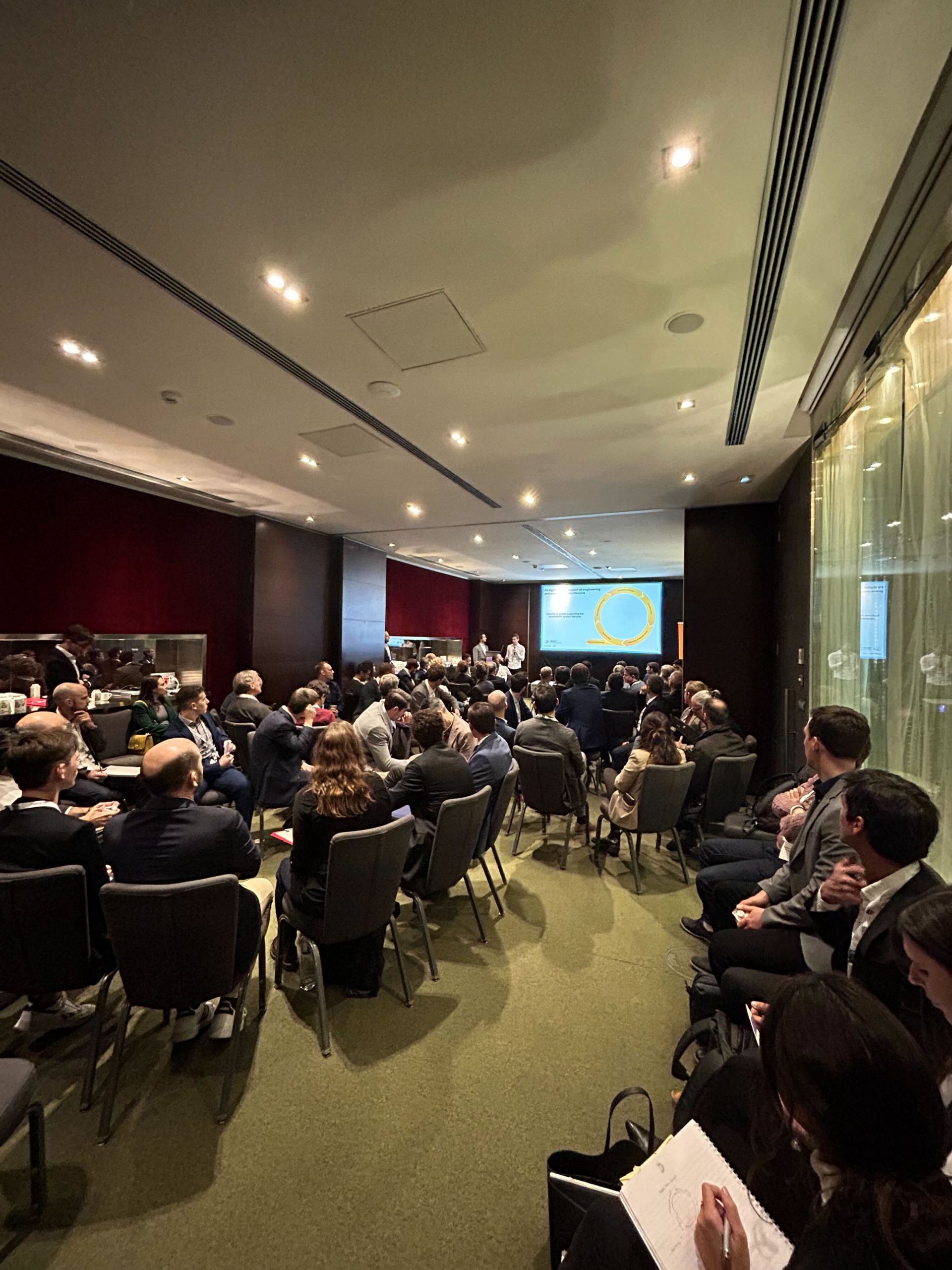
Following a presentation of this PV asset digital twin concept, we invited each group to answer a set of questions regarding current practices and workflows related to solar project commissioning, asset onboarding onto operations and maintenance platforms, and fault detection and resolution. Here are the main takeaways:
- Developers were the most blamed for not sharing information about PV projects, even blaming themselves. At the other end of the spectrum, finance and investors were the group that received the least blame, while attributing the most blame to other groups.
- Processing plant information is still a very time-consuming part of solar industry professionals’ jobs. This is because of difficulties in identifying and collecting data from multiple sources, the complexity of the data that has to be analyzed, and the variable quality and accuracy of this data. Notably, PDFs are still used at every step to transmit PV asset information, including layout information that was once a .dwg file. As a result, some groups reported spending about two weeks in person/time on average just to onboard a project onto their workflows. This can be much longer for older plants if asset information still exists.
- One major issue is the recovery or recreation of asset information that has been lost. This is a particularly acute issue for plants built six years or more ago, roughly about 40% of the entire solar fleet in the EU. Solar PV project information is sometimes unavailable because technology has evolved or because it was not thought to be needed later in the asset’s lifecycle. Access to this information can be crucial to repair underperforming assets or addressing faults more efficiently.
- All groups saw significant value in using a digital twin as proposed by the Trust-PV consortium to improve the accuracy and quality of asset information, develop robust procedures on how that data is collected and used, and improve data quality over time by integrating lessons learned into the conception of new PV projects.
Communication: the key to healthy relationships (also in the PV industry)

To conclude, and at risk of sounding like a standard couples-therapy counselor, communication is the key to healthy relationships. As our industry grows in size and complexity, we must mature and improve how we talk to each other in a common language that strengthens trust, reduces unnecessary work, and avoids silly mistakes.
As a sector, we must do better in sharing information on PV assets, starting from the earliest points in the PV project development stages until decommissioning or repowering. This would not only save us time, effort, and tears as we approach the 1 TW of new solar PV assets coming online every year. Improving how we communicate PV asset information would strengthen the trust and support of the asset finance and investment communities, regulators, and citizens.
PVcase is deeply committed to helping overcome the quality-quantity binary throughout the PV asset lifecycle. We care deeply about what happens to our PV plant models, even after the engineering work has been completed. We are uniquely positioned to continue deep diving into digital twins in the solar sector. We are particularly encouraged by the fact that solar professionals throughout the PV asset lifecycle all agree on the value of such a digital twin. Although we already have some excellent ideas, the form of a digital twin for the solar sector is yet to be determined. We look forward to continuing to be convenors of discussions on digital twins in the solar industry.
So if you have any cool ideas on what a digital twin could do for you or some interesting experiences you would like to share, don’t hesitate to contact us directly! In the meantime, you can also get in touch to make your solar design and engineering process much smoother and faster by scheduling a trial of our PVcase Ground Mount software.
You might also be interested in:
March 26, 2025
PVcase Yield product guide: revolutionize solar energy modeling with advanced technology
Download PVcase Yield product guide and discover how PVcase Yield is transforming solar energy modeling with its advanced digital twin technology and physics-based simulations.…
March 25, 2025
The impact of Zoning Data on strategic site selection
Zoning Data encompasses the information used by local governments to classify land use. Learn how this new addition to PVcase Prospect enables solar developers to choose a project…
March 24, 2025
PVcase’s spring product updates: what’s new
PVcase and HeatSpring offer a new training bundle on utility-scale solar engineering for solar designers and engineers.
March 5, 2025
Why fiber data is non-negotiable for data center site selection
Discover why integrating fiber data into your data center site selection process is crucial for reducing costs, accelerating deployment, and improving network resilience.
February 20, 2025
PVcase Ground Mount wins G2 2025 Best CAD & PLM Software award
PVcase and HeatSpring offer a new training bundle on utility-scale solar engineering for solar designers and engineers.
February 18, 2025
PVcase partners with HeatSpring for advanced utility-scale solar training
PVcase and HeatSpring offer a new training bundle on utility-scale solar engineering for solar designers and engineers.
February 3, 2025
Solving ground mount solar design challenges. A guide by engineers, for engineers
Download our e-book for expert insights and actionable solutions to the common pain points you encounter in your day-to-day work, and start taking back your development time.
January 15, 2025
Award-worthy solar software: PVcase’s impact in 2024
Explore how PVcase's award-winning product suite is combating climate change through innovative software and what achievements were recognized the most.
January 14, 2025
Top 10 questions asked during the PVcase Digital SmartUp’24 — answered
Customers ask, we answer — read the article to find answers to the top 10 most asked questions at the exclusive PVcase Digital SmartUp'24 event.
January 10, 2025
Developing solar projects on challenging land
Solar developers face fierce competition, congested grids, and a shrinking pool of ideal sites. What's the solution? Read and and learn how to develop on challenging land instead.
December 12, 2024
Why Locational Marginal Pricing (LMP) data is essential for solar development?
Locational Marginal Pricing (LMP) data helps solar developers forecast profitability, minimize financial risk, and optimize site selection. Let’s break down what LMP data is, its…
December 11, 2024
PVcase product updates — November highlights
With PVcase November updates, you can achieve faster, more accurate results today — no need to make them your New Year’s resolutions. Dive into the major updates from the PVcase…
December 9, 2024
The importance of quality GIS data for solar site selection
Discover the impact of high-quality GIS data on solar site selection. Learn how parcel data, grid capacity, and LMP data optimize solar project development, reduce risks, and…
December 2, 2024
Consequences of extreme weather events: can we still afford it?
Floods, hurricanes, wildfires — whether we want them or not, extreme weather events have become the new normal. This year alone, there have been 24 billion-dollar weather…
November 14, 2024
Fail fast, succeed faster: the developer’s guide to streamlining solar projects with early-stage development software
Discover how solar developers thrive by adopting the 'fail fast, succeed faster' approach. Explore the role of early-stage development software, such as PVcase Prospect, in…


